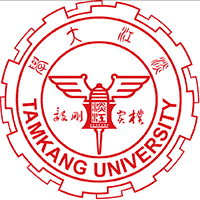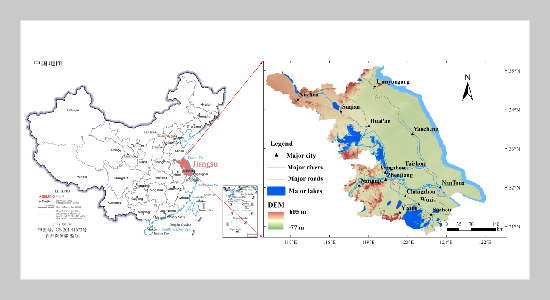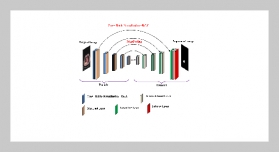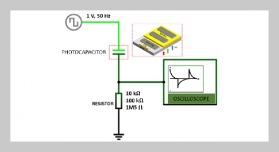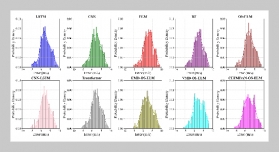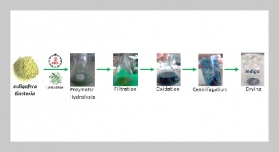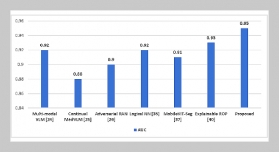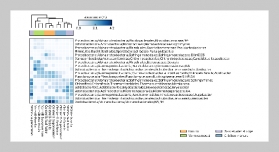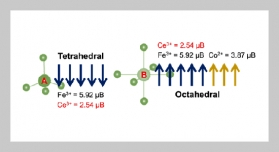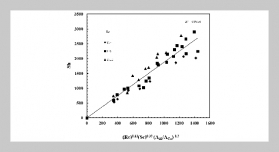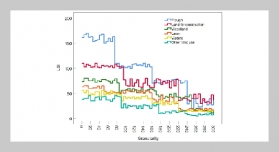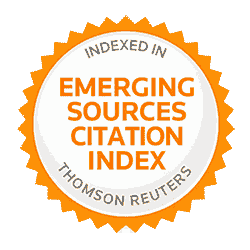- [1] J. Liu, Z. Zhang, S. Zhang, C. Yan, S. Wu, R. Li, W. Kuang, W. Shi, L. Huang, J. Ning, et al., (2020) “Innovation and development of remote sensing-based land use change studies based on Shupeng Chen’s academic thoughts" J. Geo-Inf. Sci 22(4): 680–687. DOI: 10.12082/dqxxkx.2020.200052.
- [2] J. Cui, M. Zhu, Y. Liang, G. Qin, J. Li, and Y. Liu, (2022) “Land use/land cover change and their driving factors in the Yellow River Basin of Shandong Province based on google earth Engine from 2000 to 2020" ISPRS International Journal of Geo-Information 11(3): 163. DOI: 10.3390/ijgi11030163.
- [3] J. Cui, W. Ji, P. Wang, M. Zhu, and Y. Liu, (2023) “Spatial–temporal changes in land use and their driving forces in the circum-Bohai coastal zone of China from 2000 to 2020" Remote Sensing 15(9): 2372. DOI: 10.3390/rs15092372.
- [4] S. Tang, L. Song, S. Wan, Y. Wang, Y. Jiang, and J. Liao, (2022) “Long-time-series evolution and ecological effects of coastline length in coastal zone: a case study of the Circum-Bohai coastal zone, China" Land 11(8): 1291. DOI: 10.3390/land11081291.
- [5] J.Liu,H.Kang,W.Tao,H.Li,D.He,L.Ma,H.Tang,S. Wu, K. Yang, and X. Li, (2023) “A spatial distribution Principal component analysis (SD-PCA) model to assess pollution of heavy metals in soil" Science of The Total Environment 859: 160112. DOI: 10.1016/j.scitotenv.2022.160112.
- [6] M.A.MoharramandD.M.Sundaram,(2023) “Land use and land cover classification with hyperspectral data: Acomprehensive review of methods, challenges and future directions" Neurocomputing 536: 90–113. DOI: 10.1016/j.neucom.2023.03.025.
- [7] Y. Hu, A. Raza, N. R. Syed, S. Acharki, R. L. Ray, S. Hussain, H. Dehghanisanij, M. Zubair, and A. El beltagi, (2023) “Land use/land cover change detection and NDVI estimation in Pakistan’s Southern Punjab Province" Sustainability 15(4): 3572. DOI: 10.3390/su15043572.
- [8] S. Aldiansyah and R. A. Saputra, (2023) “Comparison of machine learning algorithms for land use and land cover analysis using Google Earth engine (Case study: Wangguwatershed)" International Journal of Remote Sensing and Earth Sciences (IJReSES) 19(2): 197 210. DOI: 10.30536/j.ijreses.2022.v19.a3803.
- [9] M.Asif, J. H. Kazmi, A. Tariq, N. Zhao, R. Guluzade, W. Soufan, K. F. Almutairi, A. E. Sabagh, and M. Aslam, (2023) “Modelling of land use and land cover changes and prediction using CA-Markov and Random Forest" Geocarto International 38(1): 2210532. DOI: 10.1080/10106049.2023.2210532.
- [10] A. M. Abdi, (2020) “Land cover and land use classifi cation performance of machine learning algorithms in a boreal landscape using Sentinel-2 data" GIScience & Remote Sensing 57(1): 1–20. DOI: 10.1080/15481603.2019.1650447.
- [11] D.Chen,Y.Wang,Z.Shen,J.Liao,J.Chen,andS.Sun, (2022) “Long time-series mapping and change detection of coastal zone land use based on google earth engine and multi-source data fusion" Remote Sensing 14(1): 1. DOI: 10.3390/rs14010001.
- [12] F. Grings, E. Roitberg, and V. Barraza, (2019) “EVI time-series breakpoint detection using convolutional networks for online deforestation monitoring in Chacoforest" IEEE Transactions on Geoscience and Remote Sensing 58(2): 1303–1312. DOI: 10.1109/TGRS.2019.2945719.
- [13] Y. Jin, X. Liu, J. Yao, X. Zhang, and H. Zhang, (2020) “Mapping the annual dynamics of cultivated land in typical area of the Middle-lower Yangtze plain using long time-series of Landsat images based on Google Earth Engine" International Journal of Remote Sensing 41(4): 1625–1644. DOI: 10.1080/01431161.2019.1673917.
- [14] J. Verbesselt, R. Hyndman, G. Newnham, and D. Cul venor, (2010) “Detecting trend and seasonal changes in satellite image time series" Remote sensing of Environ ment 114(1): 106–115. DOI: 10.1016/j.rse.2009.08.014.
- [15] Y. Ye, Y. Wang, J. Liao, J. Chen, Y. Zou, Y. Liu, and C. Feng, (2022) “Spatiotemporal pattern analysis of land use functions in contiguous coastal cities based on long term time series remote sensing data: a case study of Bohai Sea Region, China" Remote Sensing 14(15): 3518. DOI: 10.3390/rs14153518.
- [16] X. Cao, J. Han, and X. Li, (2023) “Analysis of the im pact of land use change on grain production in Jiangsu Province, China" Land 13(1): 20. DOI: 10.3390/land13010020.
- [17] G. Vanum, (2012) “Impact of urbanization and land use changes on climate" International Journal of Physical and Social Sciences 2(9): 414–432.
- [18] G. Shi, P. Ye, L. Ding, A. Quinones, Y. Li, and N. Jiang, (2019) “Spatio-temporal patterns of land use and cover change from 1990 to 2010: A case study of Jiangsu Province, China" International Journal of Environ mental Research and Public Health 16(6): 907. DOI: 10.3390/ijerph16060907.
- [19] X. Du, X. Jin, X. Yang, X. Yang, and Y. Zhou, (2014) “Spatial pattern of land use change and its driving force in Jiangsu Province" International journal of environ mental research and public health 11(3): 3215–3232. DOI: 10.3390/ijerph110303215.
- [20] L. Yang, J. Zhang, E. Gong, M. Liu, J. Ren, and Y. Wang, (2022) “Analysis of spatio-temporal land-use pat terns and the driving forces in Xi’an City using GEE and multi-source data" Trans. Chin. Soc. Agric. Eng 38: 279–288. DOI: 10.11975/j.issn.1002-6819.2022.02.031.
- [21] D. Ming, T. Zhou, M. Wang, and T. Tan, (2016) “Land cover classification using random forest with genetic algorithm-based parameter optimization" Journal of Ap plied Remote Sensing 10(3): 035021–035021. DOI: 10.1117/1.JRS.10.035021.
- [22] W. Zhang, C. Wu, H. Zhong, Y. Li, and L. Wang, (2021) “Prediction of undrained shear strength using extreme gradient boosting and random forest based on Bayesian optimization" Geoscience Frontiers 12(1): 469–477. DOI: 10.1016/j.gsf.2020.03.007.
- [23] C.-C. Feng and D. M. Flewelling, (2004) “Assessment of semantic similarity between land use/land cover classification systems" Computers, Environment and Ur ban Systems 28(3): 229–246. DOI: 10.1016/S0198 9715(03)00020-6.
- [24] N.Wentao,S. Qinghui, X. Zhenzhen, and S. Wenwen, (2023) “Evaluation of the land use benefit of rapidly expanding cities based on coupling coordination and a trans fer matrix" Journal of Resources and Ecology 14(3): 542–555. DOI: 10.5814/j.issn.1674-764x.2023.03.010.
- [25] L. Rui and Z. Daolin, (2010) “Methods for detecting land use changes based on the land use transition matrix" Resources Science 32(8): 1544–1550.
- [26] A. N. Jaber and S. U. Rehman, (2020) “FCM–SVM based intrusion detection system for cloud computing environment" Cluster Computing 23(4): 3221–3231. DOI: 10.1007/s10586-020-03082-6.
- [27] F. Fu, S. Deng, D. Wu, W. Liu, and Z. Bai, (2022) “Research on the spatiotemporal evolution of land use landscape pattern in a county area based on CA-Markov model" Sustainable Cities and Society 80: 103760. DOI: 10.1016/j.scs.2022.103760.
- [28] Y.Zhou, M.Chen, Z.Tang, andZ.Mei,(2021)“Urbanization, land use change, and carbon emissions: Quantitative assessments for city-level carbon emissions in Beijing Tianjin-Hebei region" Sustainable Cities and Society 66: 102701. DOI: 10.1016/j.scs.2020.102701.
- [29] W. Chen, J. Zeng, and N. Li, (2021) “Change in land use structure due to urbanisation in China" Journal of Cleaner Production 321: 128986. DOI: 10.1016/j.jclepro.2021.128986.
- [30] X.Gao, J. Shen, W. He, X. Zhao, Z. Li, W. Hu, J. Wang, Y. Ren, and X. Zhang, (2021) “Spatial-temporal analysis of ecosystem services value and research on ecological compensation in Taihu Lake Basin of Jiangsu Province in China from 2005 to 2018" Journal of Cleaner Production 317: 128241. DOI: 10.1016/j.jclepro.2021.128241.
- [31] S. Jiang, J. Meng, L. Zhu, and H. Cheng, (2021) “Spatial-temporal pattern of land use conflict in China and its multilevel driving mechanisms" Science of the Total Environment 801: 149697. DOI: 10.1016/j.scitotenv.2021.149697.
- [32] B.-Y. Yuan, J.-H. Gao, Y. Chi, B. Zha, and Z.-H. Gong, (2022) “Cross-scale spatiotemporal characteristics of land scape ecological conditions index in coastal zone of Jiangsu Province, China during 1990-2020" Ying yong sheng taixue bao= The journal of applied ecology 33(2): 489–499. DOI: 10.13287/j.1001-9332.202202.016.
- [33] Y.Jian, Y.Chen, J. Gong,C.Wenli,andK.Chen,(2022) “Application of spatiotemporal pattern mining methods for land use transition research: A case study of Baiyun District in Guangzhou" Frontiers in Environmental Science 10: 893217. DOI: 10.3389/fenvs.2022.893217.
